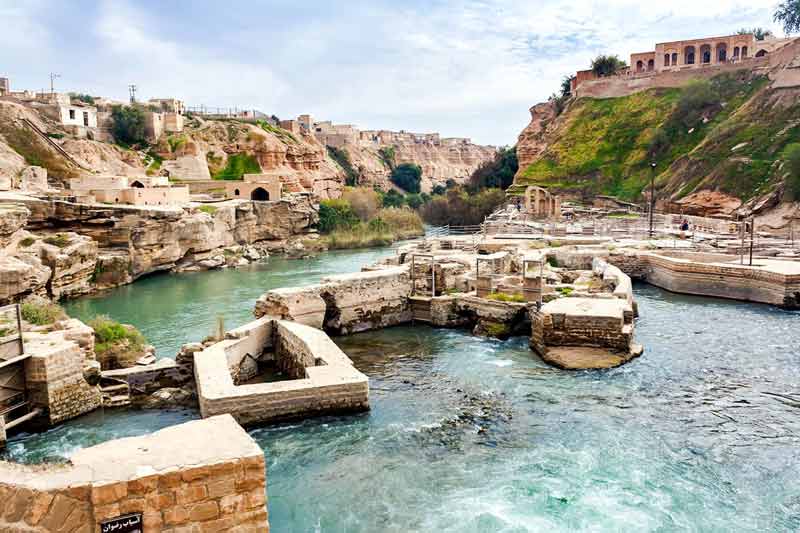Shushtar Historical Hydraulic System: An Ingenious Feat of Engineering
Are you looking for a destination that combines history, engineering, and natural beauty? Look no further than the Shushtar Historical Hydraulic System in Iran. This ancient water management and engineering marvel, dating back to the 5th century BCE, has been inscribed as a UNESCO World Heritage Site and is considered an outstanding example of Persian engineering and architecture.
The Shushtar Historical Hydraulic System, located in the southwestern province of Khuzestan in Iran, is an exceptional example of ancient water management and engineering. The system’s canals, dams, waterfalls, and tunnels were designed to provide irrigation, water supply, and power to the city of Shushtar and its surrounding lands, and continue to amaze visitors with their ingenuity and sophistication. So why not add the Historical Hydraulic System of Shushtar to your travel bucket list and experience the wonders of ancient engineering firsthand?
To visit Shushtar Historical Hydraulic System, don’t hesitate to look into our Iran World Heritage Tour.
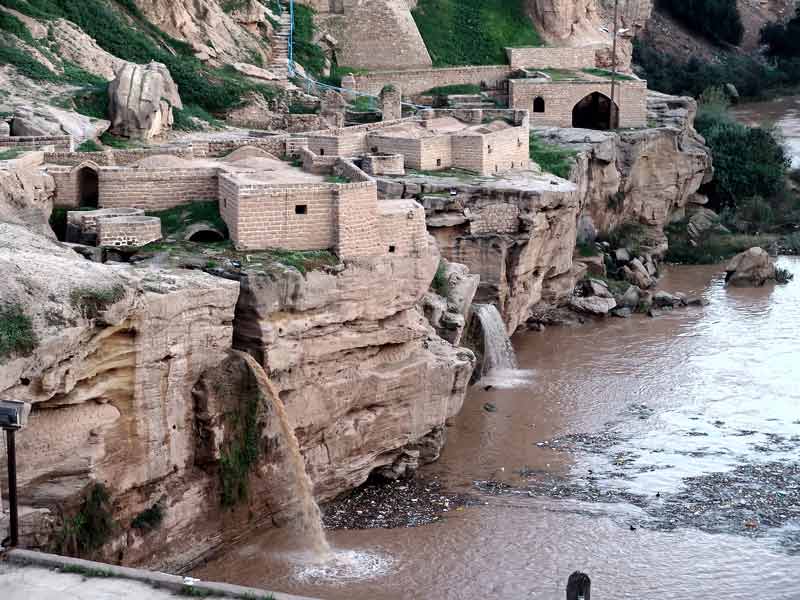
The History of the Hydraulic System of Shushtar
Shushtar was an important city in ancient Persia, located on the banks of the Karun River. The city was known for its fertile lands, which were irrigated by a complex system of canals, underground tunnels, waterfalls, and dams. The Shushtar Historical Hydraulic System was conceived and developed over several centuries by Persian engineers and architects, starting from the Achaemenid period (550-330 BCE) to the Sassanian period (224-651 CE). The system was continuously improved and expanded over time, with new features and technologies added to increase its efficiency and effectiveness.
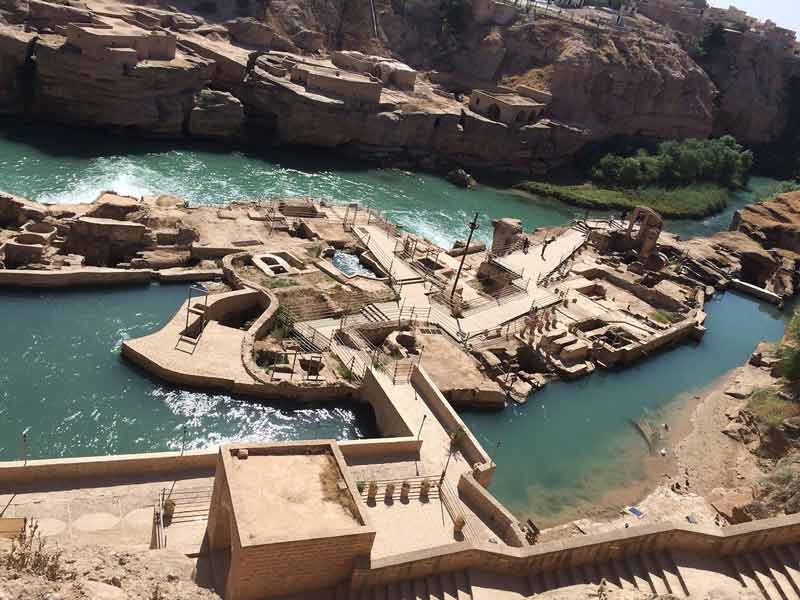
What are the Components of the Shushtar Hydraulic System?
The Shushtar Historical Hydraulic System comprises several components, including:
- The Gargar Canal: is the main canal of the system, which diverts water from the Karun River to the city of Shushtar and its surrounding lands. The canal is approximately 50 kilometers long and runs through several valleys and mountainous areas. The canal has a series of gates and dams that regulate the flow of water and prevent flooding.
- The Shadorvan Bridge: is a historic bridge that spans the Gargar Canal and connects the two sides of the city of Shushtar. The bridge has 40 arches and is approximately 500 meters long. The bridge also serves as a dam, with several gates that control the flow of water.
- The Kaisar Dam: is a historic dam built during the Sassanian period, which is approximately 500 meters long and 26 meters high. The dam has 40 sluice gates that regulate the flow of water and provide irrigation to the agricultural lands surrounding Shushtar.
- The Salasel Castle: is a historic castle built during the Sassanian period, which was used to protect the Shushtar Hydraulic System from invaders. The castle is built on a hill overlooking the city and has a series of underground tunnels that connect it to the canals and waterfalls of the system.UNESCO World Heritage Site
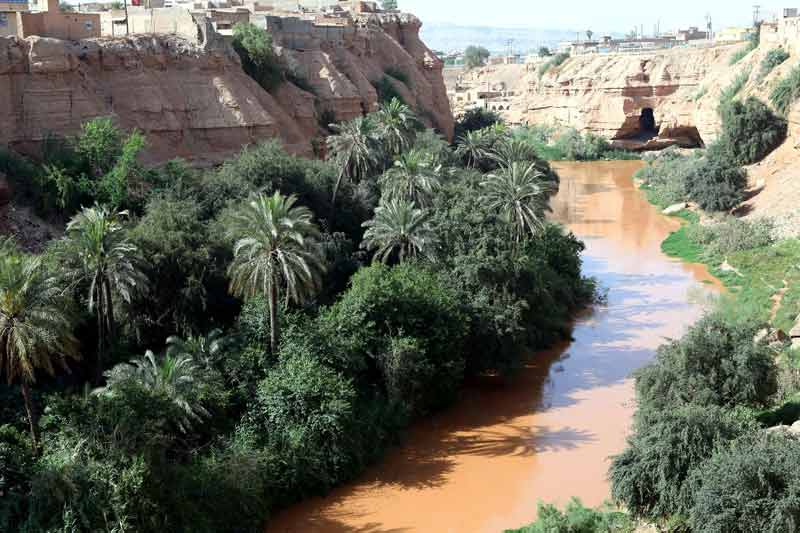
Why is Shushtar Historical Hydraulic System in Iran recognized as a UNESCO world heritage?
UNESCO recognizes the exceptional universal value of Shushtar Hydraulic System and added it to its World Heritage list in 2009 to ensure its protection and preservation for future generations. Here are some of the reasons why:
- The Shushtar Hydraulic System is an exceptional example of ancient water management engineering and demonstrates the outstanding achievements of ancient civilizations.
- The System is a testament to the rich cultural exchange among various civilizations in Persia, spanning the Achaemenid, Parthian, and Sassanian eras.
- The system is a remarkable example of an ensemble of hydraulic structures and technologies from different historical periods, including canals, dams, waterfalls, and tunnels.
- The Hydraulic System of Shushtar is an outstanding example of the harmonious integration of human interventions and natural landscapes and demonstrates the relationship between human societies and their environment.
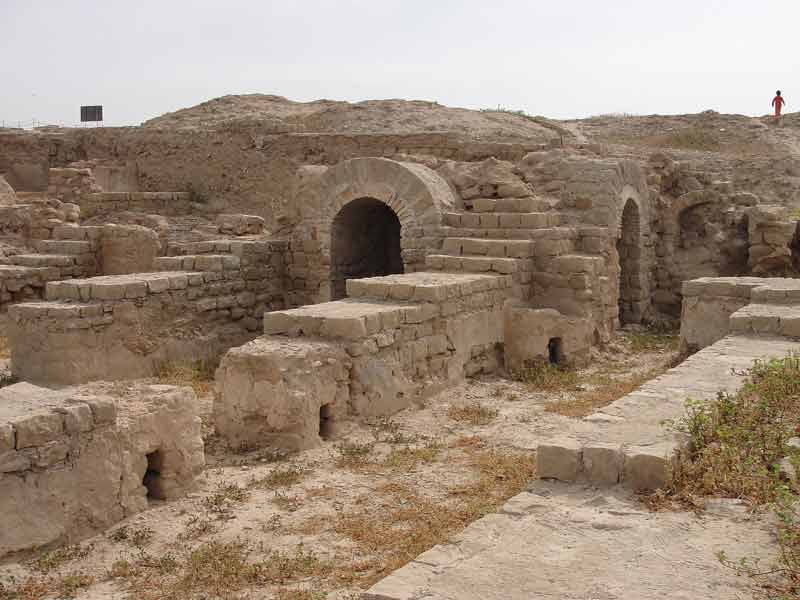
When to visit the Hydraulic System of Shushtar?
The best time to visit the Shushtar Historical Hydraulic System in Iran is during the spring (March to May) and fall (September to November) when the weather is mild and pleasant, ranging from around 15-25°C (59-77°F), and the chances of rain are relatively low. The region during the summer months (June to August) can reach up to 40°C (104°F) in some areas and in winter months (December to February) can be cold.
Where is the Shushtar Historical Hydraulic System located?
The Shushtar Hydraulic System is in the city of Shushtar in the southwestern Khuzestan province of Iran. It is approximately 92 kilometers (57 miles) away from Ahvaz.
What to visit in Iran after the Historical Hydraulic System of Shushtar?
We have included Shushtar Historical Hydraulic System in Iran World Heritage Tour. This package offers a unique opportunity to explore the rich cultural and historical heritage of the region, including the stunning World Heritage monuments. Our tour packages offer a comprehensive and immersive experience of Iran’s diverse culture, architecture and nature at reasonable rates.
If you’re interested in exploring more of Iran’s cultural and historical treasures, there are many other destinations worth visiting. Here are a few suggestions:
Shush: the capital of the Elamite, Achaemenid, and Sassanian empires contains many historical and archaeological monuments, including the Tomb of Daniel.
Chogha Zanbil: Chogha Zanbil ziggurat is one of the best-preserved examples of this type of structure in the world. Chogha Zanbil is also a UNESCO World Heritage Site.
Kermanshah: Kermanshah is about 5 hours far from Shushtar Historical Hydraulic System and is home to several fascinating sites, including the Taq-e Bostan rock reliefs and Bisotun.
Uramanat: The UNESCO-recognized Uramanat is about 550 kilometers (342 miles) northwest of Shushtar that worth visiting after the Historical Hydraulic System of Shushtar.
Persepolis: Located in the southwestern province of Fars, Persepolis is an ancient city that was once the capital of the Achaemenid Empire. The city is home to stunning ruins, including the Gate of All Nations, the Apadana Palace, and the Hall of 100 Columns.
Isfahan: Known as the “half of the world,” Isfahan is a beautiful city with a rich history and stunning architecture. Highlights include the Naqsh-e Jahan Square, the Chehel Sotoun Palace, and the Shah Mosque.
Shiraz: Located in the southern province of Fars, Shiraz is known for its beautiful gardens, historic mosques, and vibrant bazaars. Highlights include the gardens of Eram and Narenjestan, the Vakil Mosque, and the Nasir al-Mulk Mosque.
Let us know your experiences of visiting or your questions about the Shushtar Historical Hydraulic System in the comment box below, we will be happy to hear from you!

